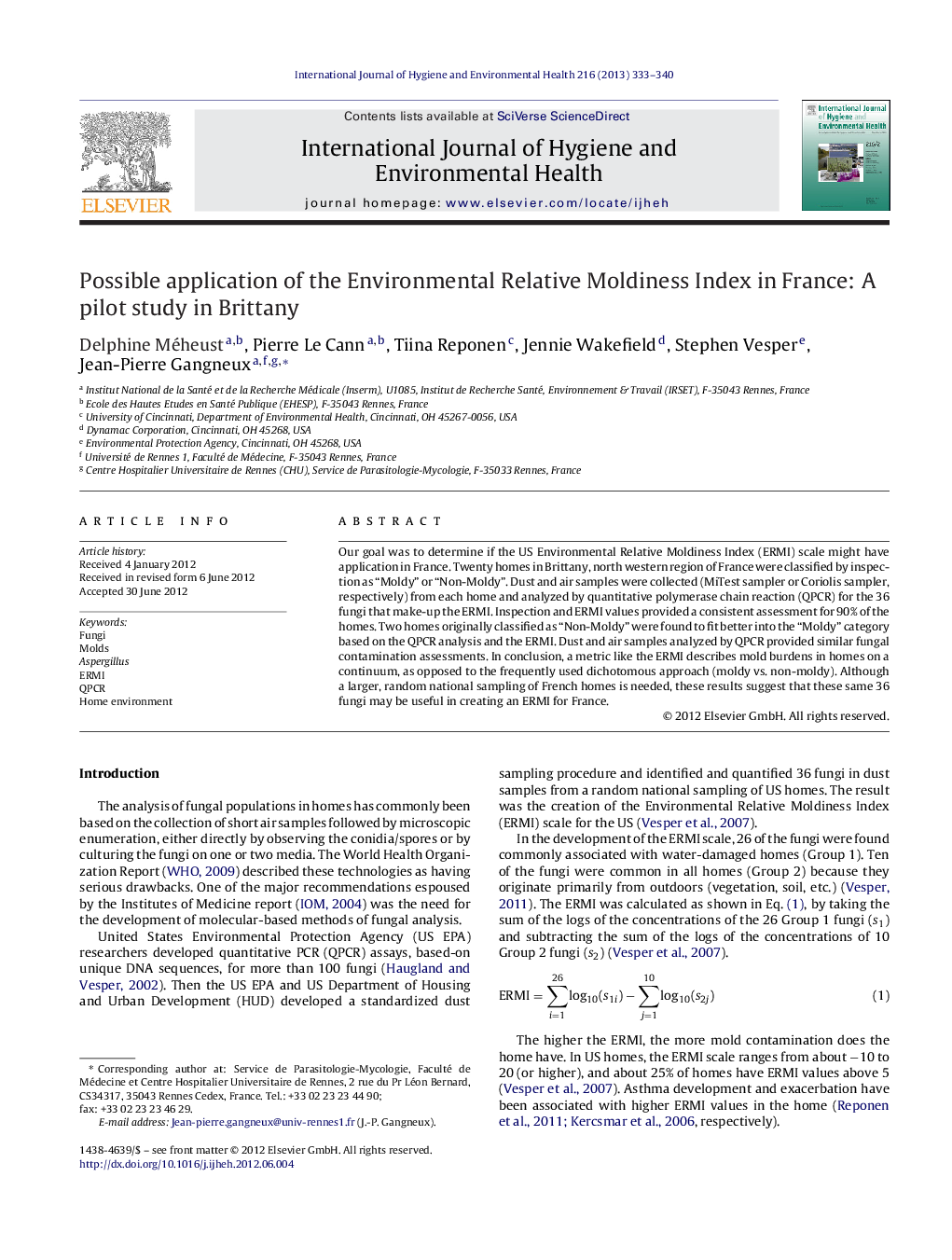| Article ID | Journal | Published Year | Pages | File Type |
|---|---|---|---|---|
| 2588842 | International Journal of Hygiene and Environmental Health | 2013 | 8 Pages |
Our goal was to determine if the US Environmental Relative Moldiness Index (ERMI) scale might have application in France. Twenty homes in Brittany, north western region of France were classified by inspection as “Moldy” or “Non-Moldy”. Dust and air samples were collected (MiTest sampler or Coriolis sampler, respectively) from each home and analyzed by quantitative polymerase chain reaction (QPCR) for the 36 fungi that make-up the ERMI. Inspection and ERMI values provided a consistent assessment for 90% of the homes. Two homes originally classified as “Non-Moldy” were found to fit better into the “Moldy” category based on the QPCR analysis and the ERMI. Dust and air samples analyzed by QPCR provided similar fungal contamination assessments. In conclusion, a metric like the ERMI describes mold burdens in homes on a continuum, as opposed to the frequently used dichotomous approach (moldy vs. non-moldy). Although a larger, random national sampling of French homes is needed, these results suggest that these same 36 fungi may be useful in creating an ERMI for France.
